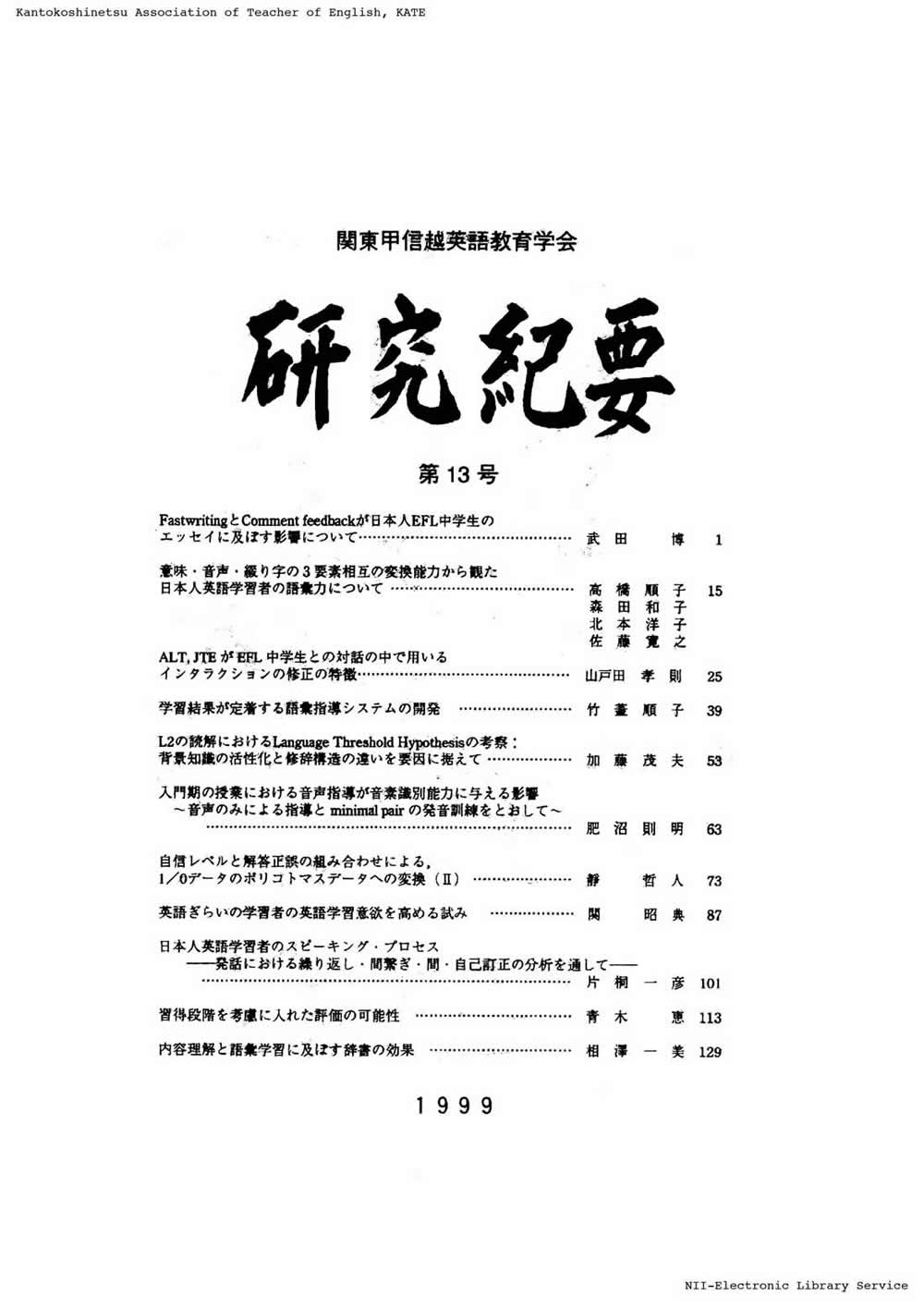13 巻
選択された号の論文の17件中1~17を表示しています
- |<
- <
- 1
- >
- >|
-
原稿種別: 表紙
1999 年 13 巻 p. Cover1-
発行日: 1999/03/01
公開日: 2017/07/14
PDF形式でダウンロード (43K) -
原稿種別: 表紙
1999 年 13 巻 p. Cover2-
発行日: 1999/03/01
公開日: 2017/07/14
PDF形式でダウンロード (43K) -
原稿種別: 本文
1999 年 13 巻 p. 1-14
発行日: 1999/03/01
公開日: 2017/07/14
PDF形式でダウンロード (1063K) -
原稿種別: 本文
1999 年 13 巻 p. 15-23
発行日: 1999/03/01
公開日: 2017/07/14
PDF形式でダウンロード (719K) -
原稿種別: 本文
1999 年 13 巻 p. 25-37
発行日: 1999/03/01
公開日: 2017/07/14
PDF形式でダウンロード (777K) -
原稿種別: 本文
1999 年 13 巻 p. 39-51
発行日: 1999/03/01
公開日: 2017/07/14
PDF形式でダウンロード (1050K) -
原稿種別: 本文
1999 年 13 巻 p. 53-62
発行日: 1999/03/01
公開日: 2017/07/14
PDF形式でダウンロード (787K) -
原稿種別: 本文
1999 年 13 巻 p. 63-72
発行日: 1999/03/01
公開日: 2017/07/14
PDF形式でダウンロード (718K) -
原稿種別: 本文
1999 年 13 巻 p. 73-86
発行日: 1999/03/01
公開日: 2017/07/14
PDF形式でダウンロード (680K) -
原稿種別: 本文
1999 年 13 巻 p. 101-112
発行日: 1999/03/01
公開日: 2017/07/14
PDF形式でダウンロード (765K) -
原稿種別: 本文
1999 年 13 巻 p. 113-128
発行日: 1999/03/01
公開日: 2017/07/14
PDF形式でダウンロード (878K) -
原稿種別: 本文
1999 年 13 巻 p. 129-142
発行日: 1999/03/01
公開日: 2017/07/14
PDF形式でダウンロード (861K) -
原稿種別: 付録等
1999 年 13 巻 p. App1-
発行日: 1999/03/01
公開日: 2017/07/14
PDF形式でダウンロード (31K) -
原稿種別: 付録等
1999 年 13 巻 p. App2-
発行日: 1999/03/01
公開日: 2017/07/14
PDF形式でダウンロード (31K) -
原稿種別: 付録等
1999 年 13 巻 p. App3-
発行日: 1999/03/01
公開日: 2017/07/14
PDF形式でダウンロード (31K) -
原稿種別: 表紙
1999 年 13 巻 p. Cover3-
発行日: 1999/03/01
公開日: 2017/07/14
PDF形式でダウンロード (53K) -
原稿種別: 表紙
1999 年 13 巻 p. Cover4-
発行日: 1999/03/01
公開日: 2017/07/14
PDF形式でダウンロード (53K)
- |<
- <
- 1
- >
- >|
